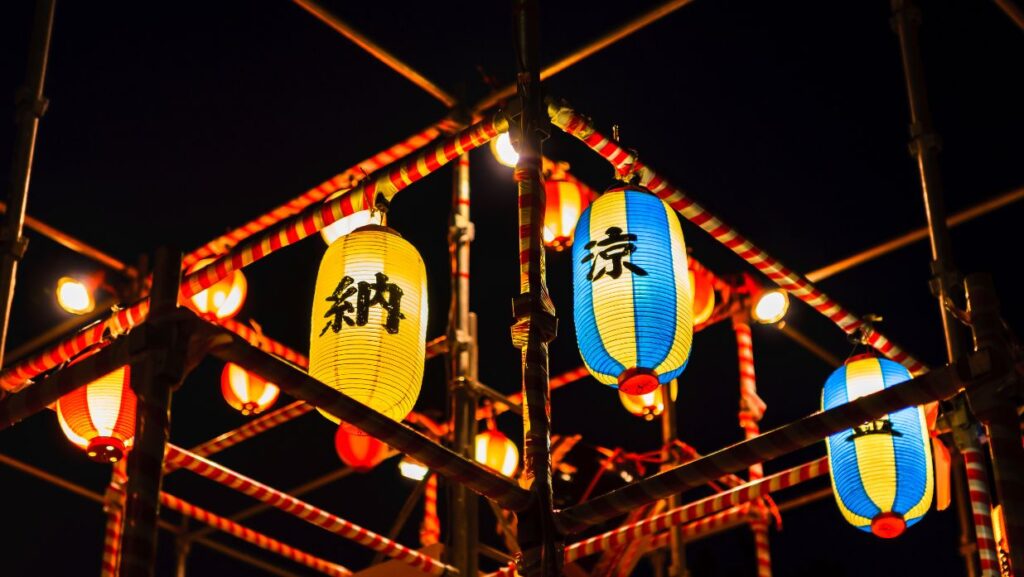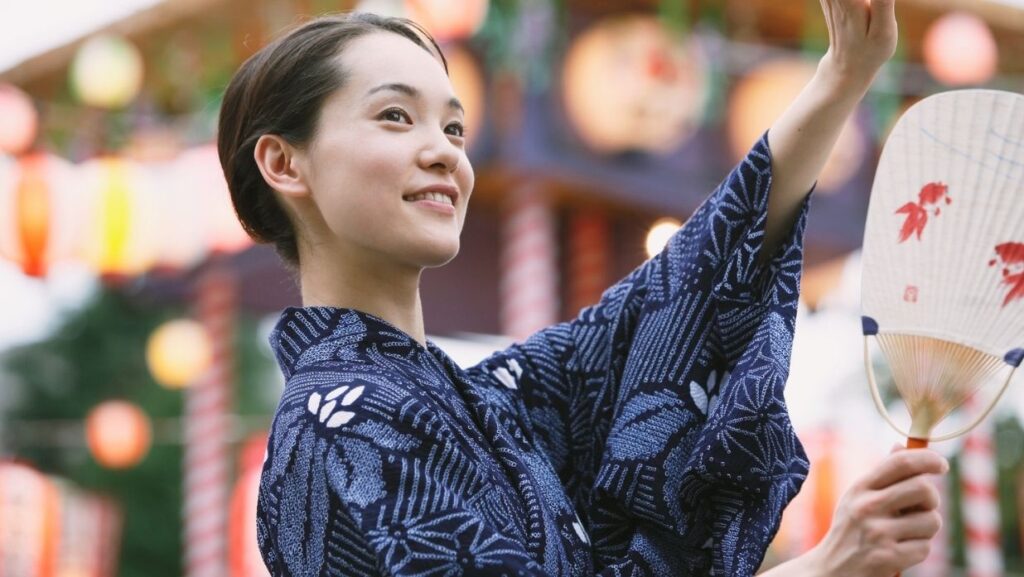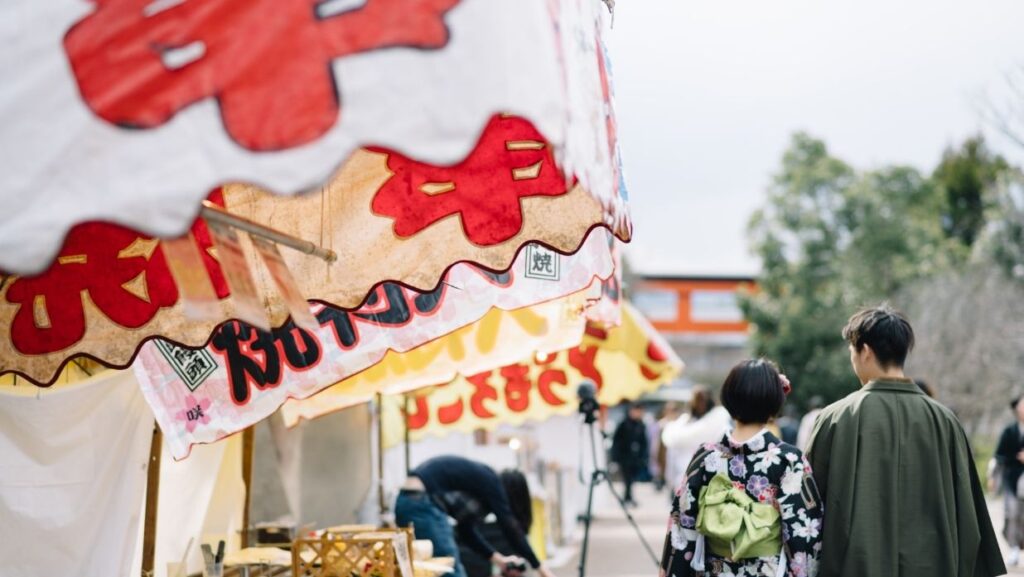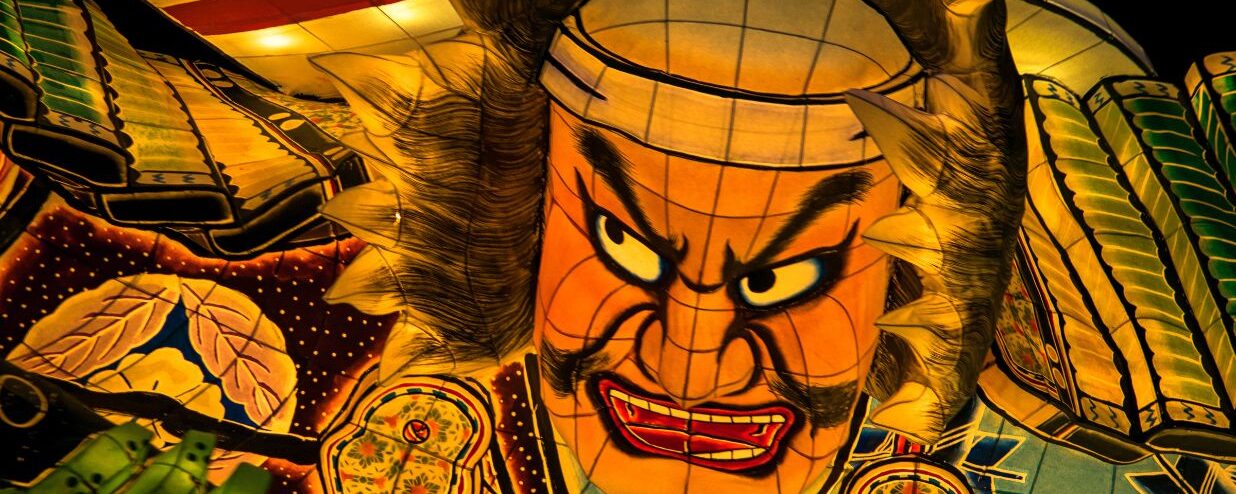Have you heard about the 500-year-old Japanese tradition called Obon? Often compared to Western Halloween or Mexico’s Day of the Dead, this holiday, also known as the Festival of the Dead, is one of the most important customs in Japanese Buddhism. Obon typically takes place between August 13 and 15, though the exact dates can vary by region. During Obon, it’s believed that the spirits of deceased ancestors return to the world of the living to visit their families. To honor them, people clean graves, light lanterns, and gather for dances known as bon odori.
So, what exactly do people do during Obon? When does it happen in your region? Whether you join in by lighting lanterns or just enjoy the time with family, read all about Obon in this guide!
What is Obon?
Obon is an annual Buddhist festival dedicated to honoring ancestors. During this time, it is believed that the spirits of the deceased return to the living world to visit their families.
Homes are often prepared with offerings of food and drink, and glowing lanterns are hung to help guide loved ones back home. Communities come alive with the sound of bon odori — traditional dances that vary from region to region — and streets are strung with rows of paper lanterns casting a warm summer glow.
Although the thought of spirits visiting might sound solemn to outsiders, Obon is anything but gloomy. It’s a joyful celebration, where you will find locals organizing festivals and setting up street food stalls. The festivities begin and end with large bonfires that symbolically welcome the spirits and later send them off until next year.

Origin of Obon
Before Obon, Japan already believed in welcoming the spirits of deceased family members, done on the full moon during the spring and autumn. It is not until Buddhism arrived that Obon became a thing, influenced by the Chinese Zhongyuan (中元) Festival.
The story most often told about Obon centers on Maha Maudgalyayana (Mokuren), a devoted disciple of the Buddha. Using his supernatural powers, Mokuren looked upon his deceased mother and discovered she had fallen into the Realm of Hungry Ghosts, suffering greatly. He tried feeding her food directly with his powers, only to see it turn to charcoal before it reached her mouth.
Heartbroken, Mokuren sought guidance from the Buddha, who instructed him to make offerings to Buddhist monks who had just completed their summer retreat on the fifteenth day of the seventh lunar month. Mokuren followed the Buddha’s advice, and to his delight, his mother was freed from her suffering. Overjoyed, Mokuren danced with happiness. This was the dance that eventually became Bon Odori, the traditional “Bon Dance” performed during Obon.
When is Obon?
Across most of Japan, Obon is celebrated from August 13 to 16. This fixed date came about after the country moved from the lunar to the solar calendar. However, traditions can still vary depending on the region.
In Tokyo and much of the country, the mid-August dates are the norm. However, some parts of Japan, like Okinawa and northern Japan, continue to follow the older lunar-based schedule, celebrating instead in mid-July.
In 2025, the typical Obon is observed from August 13 to 15, sometimes extending to the 16 in certain areas. For 2026, July Obon will again be from July 13 to 16, with August’s Obon — also called Kyuubon — running from August 14 to 16.
Is Obon a good time to visit Japan?
While Obon isn’t an official public holiday, it rivals Golden Week as one of Japan’s busiest travel seasons. Many companies give employees several days off, sometimes even a full week. This makes it a mid-summer break that’s perfect for family reunions and hometown visits. Flights, trains, and even highway tolls tend to be more expensive, and tickets can sell out quickly.
Ironically, Tokyo itself often feels a little quieter during this time, as many non-native Tokyoites pack their bags and head back to their hometowns to spend the holiday with family. However, hotel prices might be higher than usual, as well as domestic and outbound flights from Japan.
In 2025, the so-called “Obon rush” is expected to kick off around August 9 and continue until the 17th.

How do Japanese people celebrate Obon?
1. Sweeping the Graves
One of the most meaningful customs during Obon is visiting the family graves, a tradition known as ohakamairi (御墓参り). Many people take time off to return to their hometowns and wash the graves of their ancestors with ladles of water, gently removing dirt and stains.
2. Offerings to the Ancestors
After sweeping the graves, families often leave offerings of flowers, fruit, and favorite foods for their ancestors. Among the most distinctive are cucumber horses and eggplant cows, each made with toothpicks to resemble four-legged animals. The cucumber horse is fast, symbolizing the hope that ancestors arrive quickly at the start of Obon. The eggplant cow is slow, expressing the wish that spirits linger before departing.
3. Eat a vegetarian meal
The tradition of preparing vegetarian meals during Obon is deeply rooted in Buddhist principles, particularly the concept of ahimsa, or non-violence. In Buddhist teachings, offering food to the deceased provides comfort and support to their spirits. By serving only vegetarian dishes, families ensure that the offerings are pure and free from harm, aligning with the spiritual intent of the festival.
That is why, during Obon, people often eat vegetarian meals for all three daily meals. Special care is also taken with the offerings placed on the family altar. Meat and fish are avoided, and all food should be ready to eat. Grapes are washed and placed in bowls, while apples and pears are peeled or sliced so they can be enjoyed immediately. This thoughtful preparation reflects respect for the ancestors and ensures that the spirits are welcomed with care.
3. Bon Odori
A lot of the things done in Obon are rooted in family ancestry and tradition, so if you are not Japanese, it might be hard to participate in this culture.
Luckily, one of the easiest ways to immerse yourself in Obon is by watching — or even joining — Bon Odori, the traditional dance performed to welcome ancestral spirits. Each region has its own unique style of dance and music, often performed around a yagura (櫓), a central wooden platform where musicians play drums, flutes, and shamisen. Dancers usually move in large circles around the yagura, creating a mesmerizing, communal rhythm.
One of the most famous styles is Awa Odori, performed in Tokushima, where streets fill with thousands of dancers in summer yukata, moving to lively music and chanting along with the crowd. Pay attention to the movements. The dance of each regional Obon can depict the area’s history!
4. Wearing Yukata
Obon takes place in August, one of the hottest months in Japan, which also happens to be peak festival season. Many people dress in yukata, a lightweight cotton version of the traditional kimono, to stay cool while participating in Bon Odori and other festival activities.
If you can, try and rent a yukata when you go to one of your local Bon Odori. The night can still be hot and humid, particularly if you are going along with a thousand other people in the crowd, so make sure to stay cool during the summer night and stay hydrated.
Rundown of Obon in Japan

Traditionally, Obon is a 3- or 4-day celebration, and a lot of Japanese families follow a certain rundown.
1. August 13: Mukaebi
Obon traditionally begins with Mukaebi (迎え火), the welcoming fire. Families clean their homes and prepare special food offerings, called ozen (お膳), for their ancestors. These offerings typically include fruit, rice, green tea, sake, and lotus-shaped sweets.
Paper lanterns, or cochin (提灯), are lit to guide the spirits back home. In some families, lanterns are carried to graves to call ancestors to return, symbolically inviting them to join the living for the duration of the festival.
2. August 14: Hoyo
The second day of Obon, known as Hoyo or Kuyo, is a time for families to honor and remember their ancestors through Buddhist rituals. Many households invite a Buddhist priest to their home, or visit a temple or shrine, where sutras are recited and memorial services are performed.
This is also when Bon Odori dances are held. They take place in parks, gardens, and shrine grounds across Japan. Each region has its own unique style, but most performances are accompanied by the rhythmic beat of traditional taiko drums and are free for anyone to watch.
3. August 16: Okuribi
After three days of celebration, it’s time to send the visiting spirits back to their resting places. Special lanterns, called okuribi (送り火), are lit to guide the ancestors home. In many regions, families also float paper lanterns on rivers.
One famous okuribi happens in Kyoto. In the mountains, large bonfires are arranged in the shape of the Japanese adjective “大” (meaning “big” or “great”) and set ablaze.
Many regions also celebrate Toro Nagashi, a festival of floating lanterns. Hundreds of paper lanterns, each containing a candle, are gently set adrift on rivers and lakes. The lanterns are carried by the current, eventually reaching the ocean, symbolically guiding the spirits back to their world.
Things to Avoid During Obon
Obon is partly rooted in Japanese superstition and partly in showing respect for ancestors. It’s believed that during this sacred period, the spirits of ancestors return to visit the living. To honor them and stay safe according to tradition, there are several customs and taboos to keep in mind:
- Never steal offerings: These are sacred gifts meant for the ancestors.
- Don’t take photos at night: Cameras are believed to capture spirits, which may bring bad luck.
Avoid swimming: Water spirits are said to drag people into rivers or lakes during this period. - Skipping traditional offerings: If you’re visiting someone’s home during Obon, avoid neglecting small gestures like participating in meals or observing rituals. Even symbolic acknowledgment of the ancestors is appreciated.
- Do not hang wind chimes at the head of your bed: It’s said that noise can attract misfortune.
- Don’t hang clothes outside at night: According to folklore, wandering spirits may take them to wear.
Dive into the world of Japanese culture by learning the language!
Obon is just one of the many fascinating and deeply rooted traditions in Japan. One of the best ways to fully immerse yourself in these cultural experiences is by learning the Japanese language.
Whether you’re just starting your Japanese journey or looking to continue your studies, Coto Academy offers fun and flexible Japanese lessons designed to suit your lifestyle. Our conversation-focused classes allow students to join part-time lessons for a flexible schedule or fast-track their progress through intensive courses.
With locations in Tokyo, Yokohama, and online, Coto Academy makes learning Japanese accessible wherever you are. Interested in studying Japanese? Fill out the contact form below for a free level check and course consultation, and our staff will help you find the perfect class for your goals!
FAQ
What is Obon?
Obon is a traditional Japanese festival that honors the spirits of deceased ancestors. During this time, it’s believed that the spirits return to visit their families. The festival involves visiting graves, making offerings, performing rituals, and celebrating with dances called Bon Odori.
When is Obon celebrated?
Obon is typically observed from August 13 to 16, though the exact dates can vary by region.
Why do people eat vegetarian meals during Obon?
Vegetarian meals are rooted in Buddhist principles, particularly ahimsa (non-violence).
What is Bon Odori?
Bon Odori is a traditional dance performed during Obon to welcome ancestral spirits. Dances vary by region and are usually held around a central platform called a yagura, accompanied by taiko drums and folk music.
Is Obon a public holiday in Japan?
Obon is not an official public holiday, but many companies give employees several days off. This period becomes a mid-summer break, resulting in a surge in travel as families return to their hometowns.
Can non-Japanese people participate in Obon?
Absolutely! Visitors can participate respectfully by joining Bon Odori, visiting temples or shrines, and observing local traditions.
Learn more about Japanese holidays and traditions in our guide below!
